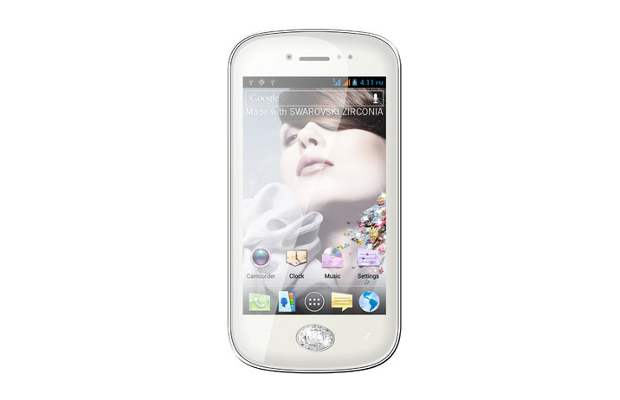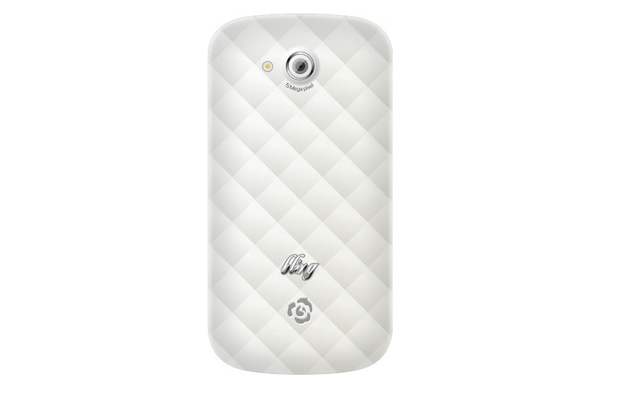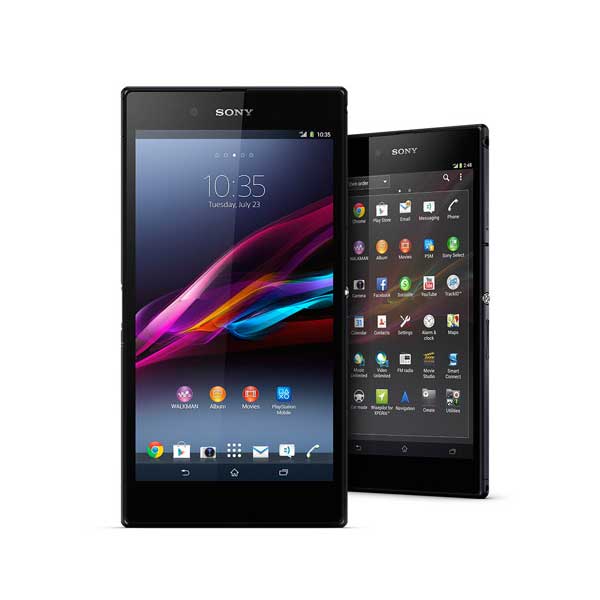Abandoning the Optimus for its highest-end devices, today LG finally announced their latest flagship - the LG G2.
At 5.2-inches, the LG G2 has a slightly bigger screen than the current crop of high-end smartphones. The resolution however, is the same at 1920 x 1080 px. The screen is a IPS unit with a brightness rating of 450nits. The LG G2 display uses something called Graphic RAM (GRAM) to reduce power consumption up to 26% when displaying a still image. LG claims this increases the expected overall battery life by up to 10%.
What's particularly striking about the phone is ultra-slim bezel and the lack of any hardware keys on the front (or sides, for that matter).
The only hardware key is actually positioned on the back. It's actually a combo of several buttons in one. That's the power/sleep key dead center along with the volume keys. The volume keys also double as shortcuts for the camera and Quick Memo feature. The reason behind the decision to position this key here is to make handling extra large smartphones easier and less prone to dropping.
The LG G2 is based around a 2.3GHz quad-core Snapdragon 800 chipset with 2GB of RAM and an Adreno 330 GPU. According to Qualcomm's CEO, who appeared in stage today, the G2 is the first phone to launch on a world-wide scale with this top-shelf processor.
The storage capacity is set at either 16GB or 32GB. Supposedly, there is a microSD slot as well, but it seems that will only be available in certain markets and the units LG brought to NYC didn't have such a thing.
The 13MP camera is on par with the rest of the top notch hardware. It's got optical image stabilization (OIS) and can record FullHD 1080p videos in up to 60fps.
LG has also worked hard on the quality of audio output. The phone can reproduce Hi-Fi 24 bit/192kHz. LG has also collaborated with the Vienna Boy's Choir to freshen up the available sounds and ringtones on the device.
The LG G2 runs Android 4.2.2 Jelly Bean out of the box.
As customary for Android flagships, the LG G2 offers several proprietary features to differentiate. You can double tap on the screen to wake it up and tap again to turn it back off. The phone will readily auto answer a call when you pick it up to your ear. There is an innovative Guest mode to secure the privacy of your data when friends want to check out your new smartphone or when you hand down your phone to your kid.
Finally, you can get rid of a currently active app and minimize it by a three-finger swipe across the screen.
Speaking of multi-tasking, the G2 can store your app progress in up to three different apps. The screenshotting feature can capture a whole webpage or a long email, not just the content in your viewport.
The LG G2 also has an Infrared port that can be used to remotely control home entertainment devices by learning from their conventional remotes.
Connectivity-wise, the LG G2 makes use of the latest generation LTE-A connectivity (up to 150Mbps), as well as dual-band Wi-Fi and Bluetooth 4.0.
For power backup, the LG G2 relies on a 3,000mAh Li-Po battery.
LG G2 will be available in black or white and will launch to over 130 carriers in the next eight weeks starting in South Korea, followed by North America, Europe and other key markets.
Mere hours before its official launch at the company's New York event, the LG G2 has showed its face again in a couple of live photos. Best of all, it poses right next to the Samsung Galaxy S4 begging for a comparison treatment.
Both smartphones are dressed in white for the occasion, which really helps the comparison. The first thing that we notice is that the G2 is bit larger than the Galaxy S4 due to the 5.2" display. However, the LG G2 has far thinner bezels, so the difference is pretty minor.
Just as earlier leaks pointed out, LG has opted out of placing a physical buttons below the display. Instead, the smartphone bets on software onscreen buttons, allowing better space efficiency above and below the screen.
At the back, things get interesting for the LG G2, which features three keys - the volume rocker and an additional button of unknown purpose. The LED flash sits on the right of the rumored 13MP camera. Both phones support LTE-A connectivity, although this particular version of the Galaxy S4 features the standard LTE radio, and not the newest LTE-A one.
Update: A hands-on video just surfaced. It's in French and lasts for 6 and a quarter minutes, giving you a very detailed look at the hardware and the UI of the smartphone.
We'll have the full scoop of the LG G2 in a couple of hours as the announcement event kicks off. Stay tuned!
LG
finally announced its G2 flagship smartphone at its event today. The 5.2-inch device comes with a very sleek design and packs a punch with its Qualcomm Snapdragon 800 processor. The good news is that LG G2 will be available on all 4 major US carriers - Verizon, AT&T, T-Mobile and Sprint.
LG G2 will hit the stores by the end of August and the smartphone will also be available on 100 different carriers within 90 days. Unfortunately, there is no official pricing details of the LG G2 at the moment.
The only hardware key on the LG G2 that is positioned at the back of the device has been the talk of the town. LG G2 also has an impressive sounding 13 megapixel rear camera with optical image stabilization and comes with a few other exciting features.
Check out our detailed launch
post for more information on the LG G2 smartphone.
LG uncovered its new smartphone beast, the G2 an NYC press event yesterday. Back then LG focused more on the ultra-slim bezel, the impressive design and the lengthy list of hot features of the smartphone, but didn't say anything about pricing. Well, thanks to some online retailers that information is no longer a mystery.
The LG G2 has been spotted on a German retailer and according to the listing, the 16GB variant of the SIM-free G2 will cost €599 (about $800), while the 32 GB unlocked version will sell for €629 (about $840). Those prices seem pretty reasonable and we suspect they will carry over to the rest of Europe.
Sadly, there is no official word on the availability of the LG G2 on the Old continent, but is should be no later thanSeptember.
























